Author Photo And Bio
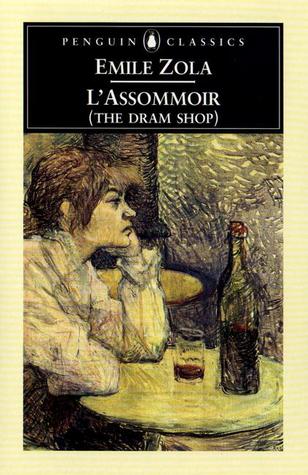 1. L’Assommoir (The Dram Shop) (1877) and Nana (1880) by Émile Zola (a tie). Like Uncle Tom’s Cabin, L’Assommoir—the story of the downfall of a Parisian laundress —turned a burning social issue into a sensational best-seller. The desperate alcoholism of Gervaise Lantier and her husband held a mirror to the shocking moral condition of the urban poor. But it is saved from mere didacticism by Zola’s eye and ear. The unbuttoned urban dialogue prefigures Celine and Henry Miller; the cinematic structuring of the novel’s great scenes suggests that Zola would have made a great film director.
1. L’Assommoir (The Dram Shop) (1877) and Nana (1880) by Émile Zola (a tie). Like Uncle Tom’s Cabin, L’Assommoir—the story of the downfall of a Parisian laundress —turned a burning social issue into a sensational best-seller. The desperate alcoholism of Gervaise Lantier and her husband held a mirror to the shocking moral condition of the urban poor. But it is saved from mere didacticism by Zola’s eye and ear. The unbuttoned urban dialogue prefigures Celine and Henry Miller; the cinematic structuring of the novel’s great scenes suggests that Zola would have made a great film director.
Nana is a low-born courtesan who succeeds among the French elite. Zola meant his heroine to represent the corruption of the Second Empire under the twin stresses of hedonism and capitalism. But like some uncontrollable genie uncorked from a bottle, she becomes the greatest femme fatale since Helen of Troy. The most explicit of the classic nineteenth-century novels, Nana exists in the vital midpoint between Anna Karenina and Valley of the Dolls.
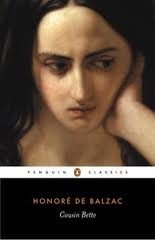 2. Cousin Bette by Honoré de Balzac (1847). Lisbeth (Bette) Fischer, a seamstress for the demimonde of actresses and courtesans and the poor relation of Baron Hulot, has a secret: she is helping to support a poor but noble Polish sculptor. Baron Hulot’s daughter Hortense discovers the secret and helps herself to the handsome sculptor. Bette then unleashes an underhanded stratagem dictated by her implacably vengeful heart: using Baron Hulot’s insatiable lust as a lever, Bette organizes her courtesan connections to ruin him, both morally and financially. Scary and psychologically acute.
2. Cousin Bette by Honoré de Balzac (1847). Lisbeth (Bette) Fischer, a seamstress for the demimonde of actresses and courtesans and the poor relation of Baron Hulot, has a secret: she is helping to support a poor but noble Polish sculptor. Baron Hulot’s daughter Hortense discovers the secret and helps herself to the handsome sculptor. Bette then unleashes an underhanded stratagem dictated by her implacably vengeful heart: using Baron Hulot’s insatiable lust as a lever, Bette organizes her courtesan connections to ruin him, both morally and financially. Scary and psychologically acute.
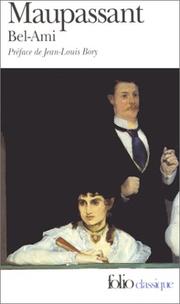 3. Bel-Ami by Guy de Maupassant (1885). Like a late nineteenth-century Tom Wolfe, Maupassant reveals the codes and rivalries of social success by chronicling the rise of Georges Duroy, a handsome, down on his heels ex-soldier. Duroy’s chance comes when an old army buddy hires him at his newspaper, La Vie Parisienne. Georges rewards his friend by coveting his wife, Madeleine, a smart, energetic free spirit who seems like Madame Bovary —after successful therapy. When her husband dies, Georges proposes literally over his corpse. But soon he is looking even higher . . .
3. Bel-Ami by Guy de Maupassant (1885). Like a late nineteenth-century Tom Wolfe, Maupassant reveals the codes and rivalries of social success by chronicling the rise of Georges Duroy, a handsome, down on his heels ex-soldier. Duroy’s chance comes when an old army buddy hires him at his newspaper, La Vie Parisienne. Georges rewards his friend by coveting his wife, Madeleine, a smart, energetic free spirit who seems like Madame Bovary —after successful therapy. When her husband dies, Georges proposes literally over his corpse. But soon he is looking even higher . . .
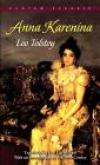 4. Anna Karenina by Leo Tolstoy (1877). Anna’s adulterous love affair with Count Vronsky —which follows an inevitable, devastating road from their dizzyingly erotic first encounter at a ball to Anna’s exile from society and her famous, fearful end —is a masterwork of tragic love. What makes the novel so deeply satisfying, though, is how Tolstoy balances the story of Anna’s passion with a second semiautobiographical story of Levin’s spirituality and domesticity. Levin commits his life to simple human values: his marriage to Kitty, his faith in God, and his farming. Tolstoy enchants us with Anna’s sin, then proceeds to educate us with Levin’s virtue.
4. Anna Karenina by Leo Tolstoy (1877). Anna’s adulterous love affair with Count Vronsky —which follows an inevitable, devastating road from their dizzyingly erotic first encounter at a ball to Anna’s exile from society and her famous, fearful end —is a masterwork of tragic love. What makes the novel so deeply satisfying, though, is how Tolstoy balances the story of Anna’s passion with a second semiautobiographical story of Levin’s spirituality and domesticity. Levin commits his life to simple human values: his marriage to Kitty, his faith in God, and his farming. Tolstoy enchants us with Anna’s sin, then proceeds to educate us with Levin’s virtue.
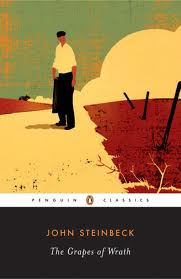 5. The Grapes of Wrath by John Steinbeck (1939). A powerful portrait of Depression-era America, this gritty social novel follows the Joad family as they flee their farm in the Oklahoma dust bowl for the promised land of California. While limping across a crippled land, Ma and Pa Joad, their pregnant daughter Rose of Sharon, and their recently paroled son Tom sleep in ramshackle Hoovervilles filled with other refugees and encounter hardship, death, and deceit. While vividly capturing the plight of a nation, Steinbeck renders people who have lost everything but their dignity.
5. The Grapes of Wrath by John Steinbeck (1939). A powerful portrait of Depression-era America, this gritty social novel follows the Joad family as they flee their farm in the Oklahoma dust bowl for the promised land of California. While limping across a crippled land, Ma and Pa Joad, their pregnant daughter Rose of Sharon, and their recently paroled son Tom sleep in ramshackle Hoovervilles filled with other refugees and encounter hardship, death, and deceit. While vividly capturing the plight of a nation, Steinbeck renders people who have lost everything but their dignity.
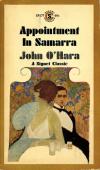 6. Appointment in Samarra (1934) and BUtterfield 8 (1935) by John O’Hara. The man Brendan Gill credited with inventing The New Yorker short story also wrote nicely observed novels of cynical slumming and sexual frankness. Appointment in Samarra relates the long weekend in which a Cadillac dealer gleefully destroys his life; BUtterfield 8 follows a cheap-date actress through the ferocious demimonde of speakeasy New York.
6. Appointment in Samarra (1934) and BUtterfield 8 (1935) by John O’Hara. The man Brendan Gill credited with inventing The New Yorker short story also wrote nicely observed novels of cynical slumming and sexual frankness. Appointment in Samarra relates the long weekend in which a Cadillac dealer gleefully destroys his life; BUtterfield 8 follows a cheap-date actress through the ferocious demimonde of speakeasy New York.
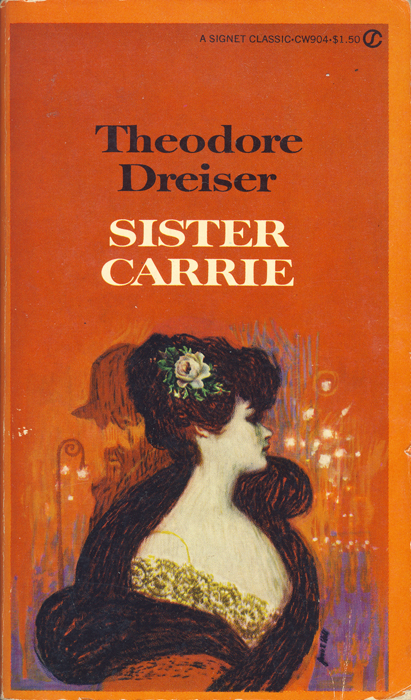 7. Sister Carrie by Theodore Dreiser (1900). Ambitious farm girl Carrie Meeber comes to Chicago, gaining the favor of a wealthy bar manager named Hurstwood to avoid the sweatshops. The smitten man ditches his family, absconds with company funds, and moves to New York with Carrie. When he can’t find work his star falls as Carrie’s rises in the theater. Filled with the tensions between rural America and its bustling urban future, and between propriety and ambition, Sister Carrie is a haunting portrait of a nation’s contradictory impulses.
7. Sister Carrie by Theodore Dreiser (1900). Ambitious farm girl Carrie Meeber comes to Chicago, gaining the favor of a wealthy bar manager named Hurstwood to avoid the sweatshops. The smitten man ditches his family, absconds with company funds, and moves to New York with Carrie. When he can’t find work his star falls as Carrie’s rises in the theater. Filled with the tensions between rural America and its bustling urban future, and between propriety and ambition, Sister Carrie is a haunting portrait of a nation’s contradictory impulses.
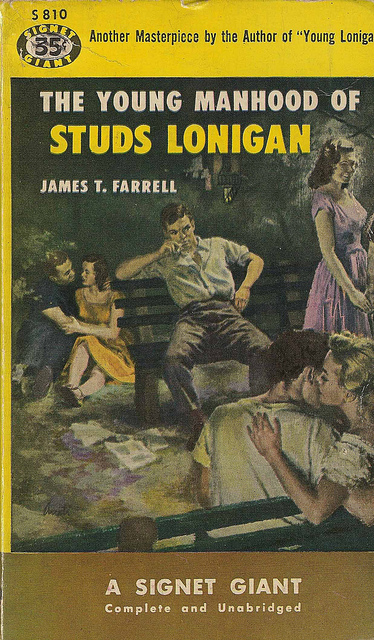 8. The Studs Lonigan trilogy—Young Lonigan (1932), The Young Manhood of Studs Lonigan (1934), and Judgment Day (1935)—by James T. Farrell. See below.
8. The Studs Lonigan trilogy—Young Lonigan (1932), The Young Manhood of Studs Lonigan (1934), and Judgment Day (1935)—by James T. Farrell. See below.
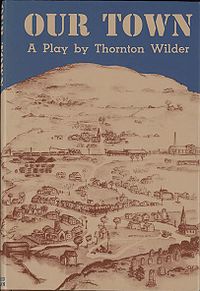 9. Our Town by Thornton Wilder (1938). This enduringly popular, Pulitzer Prize–winning play depicts small-town New England life (in fictional Grovers Corners, New Hampshire) with a unique combination of warm sentiment, wry comedy, and even a touch of surreal modernism in its moving final act. Childhood’s passage to maturity, love and marriage, birth and death are memorably enacted by the closely knit families of newspaper editor Webb and Doctor Gibbs, and observed by the benign Stage Manager who sagely connects their experiences to all our lives. Irresistible Americana.
9. Our Town by Thornton Wilder (1938). This enduringly popular, Pulitzer Prize–winning play depicts small-town New England life (in fictional Grovers Corners, New Hampshire) with a unique combination of warm sentiment, wry comedy, and even a touch of surreal modernism in its moving final act. Childhood’s passage to maturity, love and marriage, birth and death are memorably enacted by the closely knit families of newspaper editor Webb and Doctor Gibbs, and observed by the benign Stage Manager who sagely connects their experiences to all our lives. Irresistible Americana.
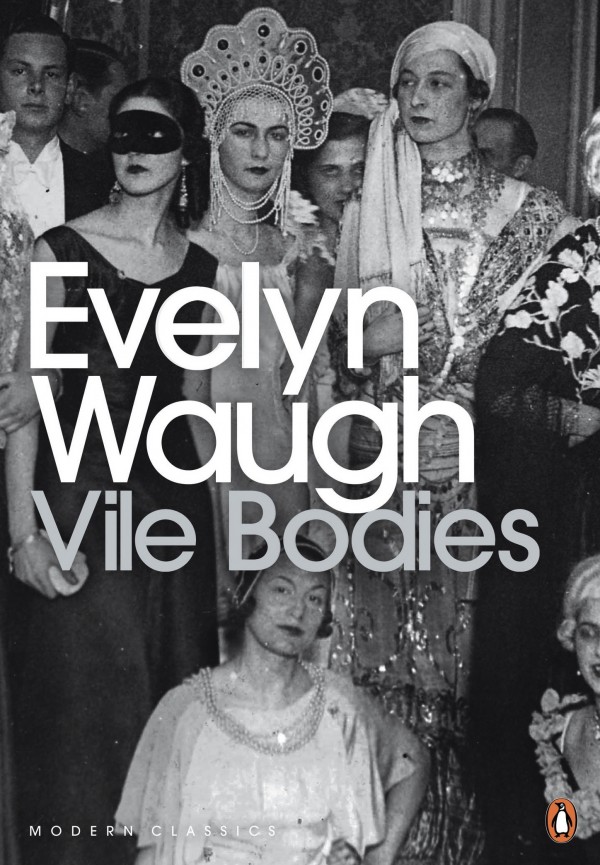 10. Vile Bodies by Evelyn Waugh (1930). This careening novel follows a group of shallow, well-off Brits to motor races and antic parties. Joining in on the Bright Young Things’ mad doings are a writer named Adam Fenwick-Symes and his on-again, off-again fiancée. War looms, but Waugh’s style —dry and bubbly as the novel’s flowing champagne —keeps us laughing, even as characters descend into madness or head for the battlefield.
10. Vile Bodies by Evelyn Waugh (1930). This careening novel follows a group of shallow, well-off Brits to motor races and antic parties. Joining in on the Bright Young Things’ mad doings are a writer named Adam Fenwick-Symes and his on-again, off-again fiancée. War looms, but Waugh’s style —dry and bubbly as the novel’s flowing champagne —keeps us laughing, even as characters descend into madness or head for the battlefield.
Appreciation of James T. Farrell’s Studs Lonigan Trilogy by Tom Wolfe
To writers born after 1950, James T. Farrell (1904–79) is known, if at all, as a “plodding realist” who wrote a lot of dull, factual novels now as dead and buried as he is. To writers born from, say, 1925 to 1935, however, the very name James T. Farrell strums the heartstrings of youth. To be young and to read Farrell’s first novel, Studs Lonigan! It made one tingle with exhiliration and wonder. How could anybody else understand your own inexpressible feelings so well?
A trio of novels published between 1932 and 1935, the Studs Lonigan trilogy is an account—”story” implies more plot than it actually has —of growing up in a lower-middle-class Irish-Catholic neighborhood in Chicago as Farrell did. He had the wit to make Studs a boy not like himself at all but like the sort of self-willed tough kid who probably made Farrell’s own school days miserable by calling him “Goof” and pulling the goof’s cap down over his eyes, eyeglasses and all. The book’s opening lines stamp Studs’s studied pose indelibly:
Studs Lonigan, on the verge of fifteen, and wearing his first suit of long trousers, stood in the bathroom with a Sweet Caporal pasted in his mug. His hands were jammed in his trouser pockets, and he sneered. He puffed, drew the fag out of his mouth, inhaled and said to himself:
“Well, I’m kissing the old dump goodbye tonight”—the old dump being a parochial junior high school.
I am convinced Farrell wrote those lines as a low-rent reprise to the far more famous lines James Joyce had opened Ulysses with eighteen years earlier: “Stately, plump Buck Mulligan came from the stairhead, bearing a bowl of lather on which a mirror and a razor lay crossed. A yellow dressing gown, ungirdled, was sustained gently behind him by the mild morning air. He held the bowl aloft and intoned:—Introibo ad altare Dei.”
Introibo ad altare Dei. For that bit of showboating by an Irish-Catholic intellectual in Dublin, Farrell had a good low-rent American raspberry: “Well, I’m kissing the old dump”—a Catholic school—”goodbye tonight.”
Farrell, plodding realism and all, was quite conscious of Joyce and all other experimental writing of the early twentieth century. In Studs Lonigan he continually uses Joyce’s most famous device, stream of consciousness, and in a more sophisticated way than the maestro. He just doesn’t feel the need to keep prodding the reader with his elbow as if to say, “Be alert. This is experimental writing.”
It is precisely through Joycean stream of conciousness that Farrell brings us beneath Studs’s hide, which the fourteen-year-old boy keeps as thick as he can, and shows us the tenderness, the love, and the sense of beauty Studs will do anything to prevent the world, meaning the other boys his age on the block, from detecting.
To me, section IV of Chapter Four of the first novel, Young Lonigan, is one of the few sublime reflections of the feeling of being in love in all of literature. One scorching hot Chicago afternoon in early July when “life, along Indiana Avenue, was crawlingly lazy,” Studs goes for a walk in Washington Park with the prettiest girl on the block, Lucy Scanlan. As the two fourteen-year-olds head for the park’s wooded island, “Studs felt, knew, that it was going to be a great afternoon, different from every other afternoon in his whole life.”
They cross the log bridge over onto the island and decide to climb up beneath the leafy dome of a huge oak tree and sit on a branch. Up in the tree it is as if they are removed from . . . the world . . . where Studs feels obliged to be so tough:
The breeze playing upon them through the tree leaves was fine. Studs just sat there and let it play upon him, let it sift through his hair. . . . The wind seemed to Studs like the fingers of a girl, of Lucy, and when it moved through the leaves it was like a girl, like Lucy, running her hand over very expensive silk, like the silk movie actresses wore in the pictures. . . . They sat. Studs swinging his legs, and Lucy swinging hers, she chattering, himself not listening to it, only knowing that it was nice, and that she laughed and talked and was like an angel, and she was an angel playing in the sun. Suddenly, he thought of feeling her up, and he told himself he was a bastard for having such thoughts. He wasn’t worthy of her, even of her fingernail, and he side-glanced at her, and he loved her, he loved her with his hands, and his lips, and his eyes, and his heart, and he loved everything about her, her dress, and voice, and the way she smiled, and her eyes, and her hair, and Lucy, all of her.
With that, Studs has enclosed himself in the cocoon of perfect love, sublime love. A century of psychologists and neuroscientists perfect in their rationalism —not to mention Studs’s gottabe tough, therefore gottabe carnal, therefore gottabe perfectly cynical adolescent cohorts, such as the wonderfully named fourteen-year-old Weary Reilly —have taught us that such “sublime” moments are merely subliminal wafts on the way to the one goal, which is no loftier than that of dogs in the park, namely, the old in and out. But Studs consciously, or stream-of-consciously, rejects such . . . rationalism . . . dismisses the notion of “feeling her up” and reduces the world to two people or perhaps only one. “They sat.” Farrell keeps repeating that sentence until it is like the ticking of a very big old clock. Studs and Lucy sat high up on a tree limb within a bower of leaves so thick, they shut out everything except the glittering surface of the lagoon and the sounds of children. There was no outside world. There was only Lucy, every perfect breath she breathed, every perfect morsel of her existence. Who, including any of the 20,000 attendees at the annual meeting of the Society for Neuroscience, can truthfully say that sublime feeling of two creatures dissolving into a single soul is not more thrilling than, in Rabelais’s phrase, playing the two-backed beast?
“He wanted the afternoon never to end, so that he and Lucy could sit there forever; her hands stole timidly into his, and he forgot everything in the world but Lucy. . . . And Time passed through their afternoon like a gentle, tender wind, and like death that was silent and cruel. . . . They sat, and about them their beautiful afternoon evaporated, split up and died like sun that was dying a red death in the calm sky.”
This invocation of death —red, silent, and cruel —creates a mood of foreboding, if my own reaction to it is any measure. The next thing Studs knows, there are graffiti scrawled on walls along Indiana Avenue reading studs loves lucy . . . lucy is crazy about studs . . . and others in that vein. Studs feels like a goof —the term boys used seventy years ago to mean dork —and hastily puts back on his bullet-proof vestments of gottabe tough, therefore gottabe carnal, therefore gottabe cynical. They had sat . . . and that afternoon up in the tree, we eventually learn, was to be the last touch of the sublime in Studs Lonigan’s short life.
The Studs Lonigan trilogy eventually totalled 919 pages. The life of every individual, sayeth the sage, runs along the line created by the intersection of two planes: personality and social setting. I can’t think of any American novelist who ever drew that line more brilliantly than James T. Farrell in this trilogy. If this be “plodding realism,” let every American novelist start plodding Studs-style, lest the American novel fall down in a heap and die, as it now seems wont to do.